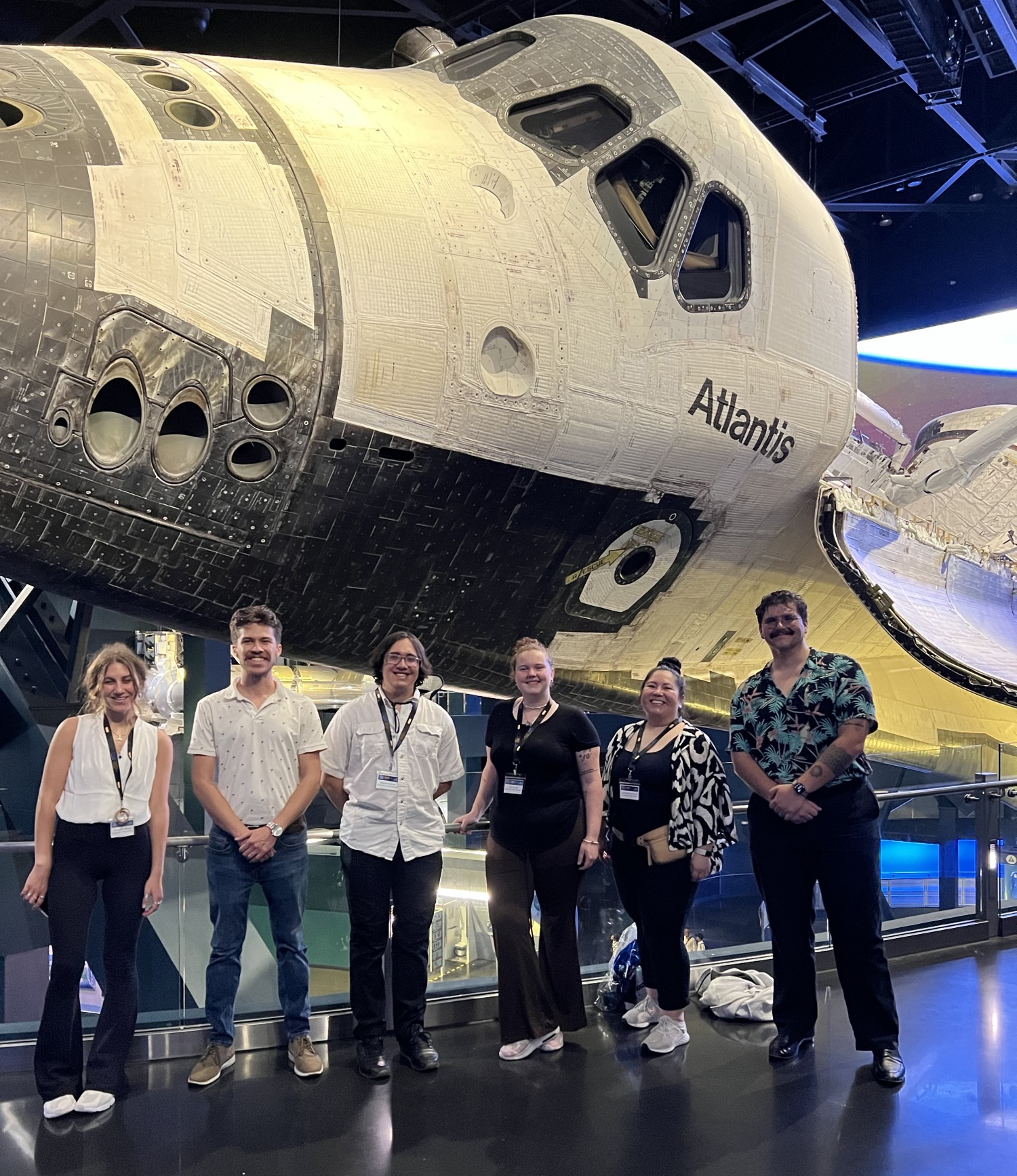UNM among universities selected for AFRL satellite Mission Concept Program
June 5, 2023 - by Kim Delker
The University of New Mexico, through the COSMIAC research center, is among eight universities selected nationwide for an Air Force Research Laboratory (AFRL) and NASA partnership called the Mission Concept Program, which will assist students with the satellite development process.

The UNM students on the team (from left to right) are Elizabeth Witney, Keegan Chavez, Andrew Gilbert, Alex Craig, Sharleen Espinoza and Daniel Joseph Garcia.
The selected universities will work in collaboration with AFRL and NASA to develop nanosatellites, which are small satellites typically weighing less than 10 kilograms. The students will have the opportunity to gain practical experience in various aspects of satellite development, including systems engineering, mission design, feasibility analyses and satellite design.
The goal is to prepare participants for the next University Nanosatellite Program cycle, which will run from Jan. 5- Feb. 3, 2024. It is sponsored by AFRL's Space Vehicles Directorate.
The program will work through NASA’s CubeSat Launch initiative to utilize AFRL staff, who will provide students with hands-on experience throughout the program in mission development and design. Students from each of the selected universities will have the opportunity to gain practical skills during a monthlong intensive training session at Kirtland Air Force Base.
The UNM students on the team are Elizabeth Witney, Keegan Chavez, Andrew Gilbert, Alex Craig, Sharleen Espinoza and Daniel Joseph Garcia.
Garcia, a research engineer at COSMIAC and a graduate student in the space systems engineering program, is the principal investigator for the satellite team at UNM. He and other team members recently presented their proposal at NASA’s Kennedy Space Center in Florida.
Garcia said that UNM’s proposed satellite mission leverages a novel approach to free space optical error correction between satellites to support the development of autonomous missions in lunar and extraterrestrial environments.
Each proposal was chosen for its educational impact, university impact, minority outreach and Department of Defense and NASA relevance. While all universities are encouraged to apply, the Mission Concept Program is aimed at helping universities overcome the learning curve when entering the field of small satellite development.
As a part of the program, students work actively with industry leaders from AFRL, Space Dynamics Laboratory and NASA to develop the proposed mission design into a robust requirements list that will be reviewed by industrial experts. This is the first step to getting a satellite mission launched and operational, which UNM’s team hopes to do in the years to come.
“This opportunity, along with others like it is being used to create an infrastructure for a proposed UNM Small Satellite Club, which looks to be chartered by the end of this calendar year,” Garcia said. “A club of this sort would support the development of a diverse and space technology workforce.”
He said the goal of such a club is to attract a diverse mix of students to the field.
“The purpose of the club is to help create equitable spaces at UNM for students of different professional, academic and cultural backgrounds to be an active part of space mission design, breaking down accessibility barriers to create equitable opportunities for our diverse and dedicated community to be a part of the industry,” he said.
Christos Christodoulou, director of COSMIAC and distinguished professor in the Department of Electrical and Computer Engineering, said that in contrast to the stereotype that the space industry and satellite development don’t tend to attract women, the program has several women on the team.
“It turns out we are attracting several female students, so that means this activity can become a way to recruit diverse students,” he said. “Space is exciting for people from all backgrounds.”
Other universities chosen for the program are Florida Institute of Technology; University of the Virgin Islands; University of South Florida; Missouri University of Science and Technology; New Mexico State University; Columbia University; and Tarleton State University in Texas. UNM, New Mexico State University and Tarleton State University are minority- or Hispanic-serving institutions.
